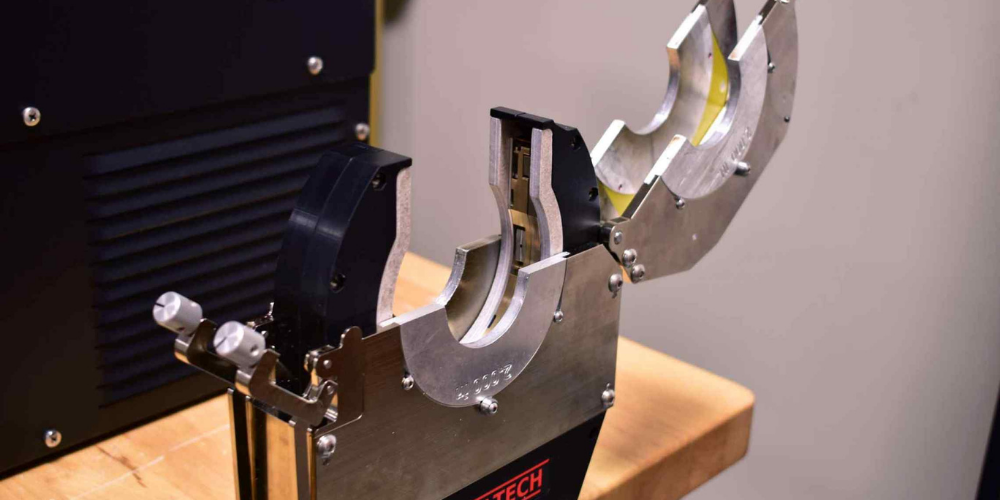
Not every orbital weld head is the same - there are two types of motors used depending on the brand and type of weld head. These internal motors provide feedback to the system’s power supply in order to control the weld head’s speed and/or position.
Tachometer Motors
Tachometer motors can be found more frequently in the orbital welding industry and are a simple type of motor. So simple, that it is essentially a small generator made of coil and wire. The tachometer provides information about the weld head’s traveling speed. Since speed is proportionate to the voltage, the information collected by the tachometer helps determine the voltage needed to maintain a constant speed. This information is collected by calibrating the weld head to the power supply. With a tachometer motor, weld head calibration will need to be performed at the beginning of each shift or every time a different weld head is connected.
Encoder Motors
The other option is using a weld head with an encoder motor. These motors use more electrical components such as sensors, LED lights, coded disks, and semiconductors. Instead of just collecting information about speed once during calibration, encoder motors are able to continuously collect voltage readings and information about the relative position. This information is then converted into digital pulses that can be relayed easily with microprocessor controls.
Advantages & Disadvantages
One drawback of tachometer technology is that its reading of the weld head may not take certain variations into account. This leads to feedback that is less precise than that of encoder motors. These variables can include factors such as temperature or even the length of the wire used in the generator. Also, tachometer motors can be considered electrically “noisy” and are susceptible to outside influence.
Magnatech uses encoder motors for most of their weld heads. They find benefit in providing by a digital pulse can be read much faster by a power supply. Also, because there are continuous readings by the power supply, voltage control is much more accurate. These continuous readings eliminate the need for weld head calibration, saving you time and simplifying your orbital welding process. If both types of motors are working perfectly, there is very little disparity between the quality of the welds. The main differences lie in the process of providing feedback to the power supply in order to control the speed of the weld head and the need or lack thereof for frequent calibration.
Magnatech Orbital Weld Heads
Most Magnatech orbital welding heads use encoders for feedback.
- QX800 Series Weld Heads, Red Heads, and T Heads use encoders for motor feedback.
- D Heads and Quick Clamp Weld Heads use back EMF for measuring motor speed and switches for position feedback.
- The 609A Pipeliner Head and C Heads use a tachometer for feedback.
- The Magnatech Tubemaster 514 can run encoder-based heads and tachometer-based heads.
- The Magnatech 515/516 can run encoder-based heads and back EMF-based heads.
- The Magnatech 517 can run encoder heads only.
Tags:
Orbital Weld Heads, Magnatech, AMI Weld Heads, Orbital Weld Head, Orbital Welder, Orbital WeldingSep 23, 2021 11:18:47 AM


.png)
Comments